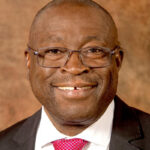Eskom has launched three programmes to procure more power for the grid, as part of its measures to address the country’s power generation shortfall and mitigate load shedding.
The power utility was granted the green light to procure at least 1 000MW of energy to add onto the grid following the load shedding crisis over the past three months.
“Initially, the programmes will focus on generators capable of supplying more than one megawatt to the grid. Over time, the threshold will be lowered to enable smaller producers to participate.
“The aim is to sign the first power supply agreement during the course of the current week, and for the power to start flowing through the grid as soon as possible,” Eskom said.
The three programmes are the Standard Offer Programme, the Emergency Generator Programme and the Bilateral Power Import Programme.
“The Standard Offer approach allows Eskom to purchase electricity at an established price, calculated at the avoided cost of own generation, including long-term energy purchases from Independent Power Producers.
“The Emergency Generator Programme [is] to procure more expensive power during periods when the grid is significantly constrained. The programme allows for independent generators to provide energy daily to compete with Eskom generators in the internal market.
“The Bilateral Power Import Programme [is] to secure imports of power to the country from neighbouring countries. Several countries have expressed an interest in selling additional surplus power to South Africa. The programme will provide a mechanism to access such opportunities,” Eskom said.
Meanwhile, load shedding has been eased to Stage 5 following the return to service of at least four generation units.
“A unit each at Camden, Kriel, Kusile and Kendal [power stations] were returned but unfortunately [we] had to take off a unit at Duvha, which developed a boiler tube leak. Planned outages are at 5 411MW and breakdowns currently amount to 16 326MW,” Eskom said.












